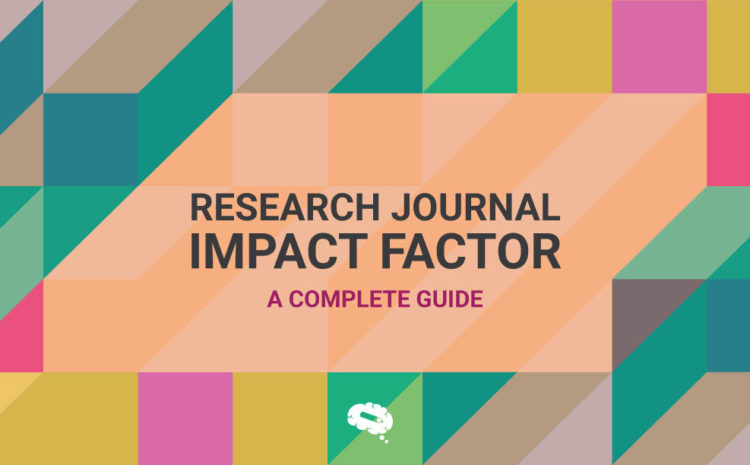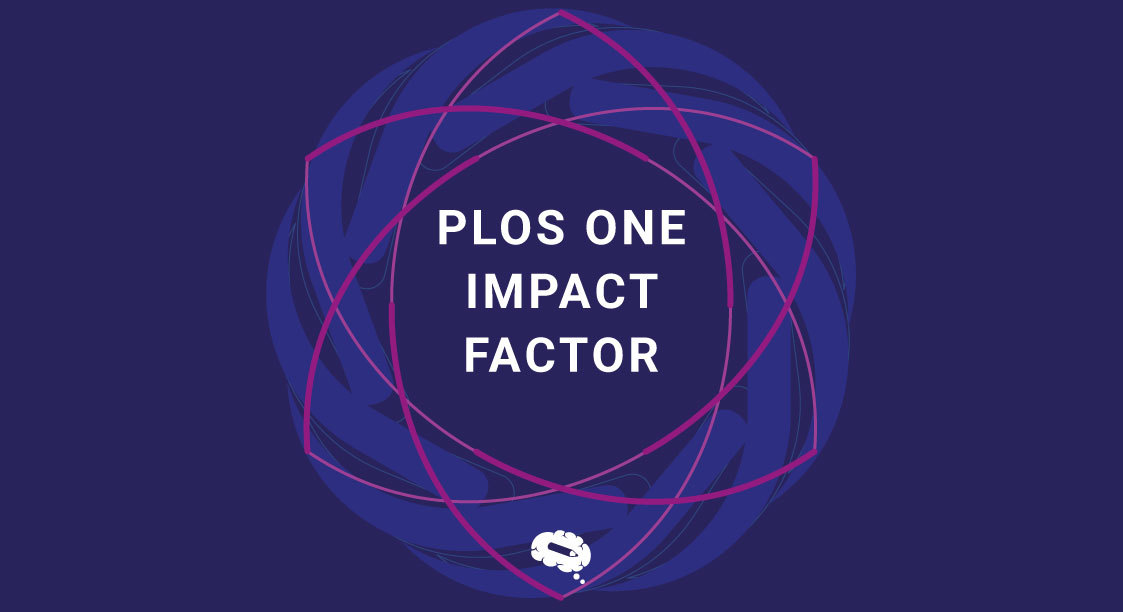If you’re a researcher, how do you think your journal is being measured based on the importance level? That’s where Eigenfactor comes in.
Det er et interessant mål som hjelper deg med å avgjøre hvilken gjennomslagskraft tidsskriftet ditt har i samfunnet. Dette er hva vi skal se i denne artikkelen, en grundig analyse av Eigenfactor. Så la oss grave dypere og fortsette med reisen for å forstå alt om Eigenfactor:
Hva er Eigenfactor?
The Eigenfactor is a metric that helps you understand the impact of academic journals. It’s different from other citation metrics because it doesn’t just count how many times a journal is cited. Instead, it considers the quality of the citations by giving more weight to citations from influential journals.
Eigenfactor måler enkelt sagt hvor viktig et tidsskrift er i det akademiske miljøet. Hvis et tidsskrift blir sitert av andre anerkjente tidsskrifter, vil det få en høyere Eigenfactor-score. Dette gjør det til et verdifullt verktøy for deg når du skal finne ut hvilke tidsskrifter som har et godt omdømme.
I motsetning til andre beregninger tar Eigenfactor også hensyn til tidsskriftets størrelse og justerer for selvsiteringer. So, it provides a more balanced view of a journal’s influence. You can use the Eigenfactor to compare journals and decide which ones are making a real impact in their field.
Overall, the Eigenfactor offers you a clear picture of a journal’s importance beyond just the number of citations it receives.
Hvordan beregnes egenfaktoren?
Eigenfactor beregnes ved å se på hvor mange ganger artikler fra et tidsskrift blir sitert i andre tidsskrifter i løpet av en femårsperiode.
Alle siteringer behandles imidlertid ikke likt. Siteringer fra tidsskrifter med stor innflytelse tillegges større vekt, noe som betyr at de bidrar mer til Eigenfactor-poengsummen.
Additionally, the Eigenfactor adjusts for the size of the journal, so larger journals don’t automatically have higher scores. Self-citations, where a journal cites itself, are also minimized in the calculation to provide a more accurate measure of a journal’s influence.
Overall, the Eigenfactor gives you a clearer view of a journal’s real impact by focusing on meaningful citations rather than just counting them.
Betydningen og anvendelsen av Eigenfactor
Formålet med Eigenfactor er å hjelpe deg med å identifisere hvilke tidsskrifter som har sterk innflytelse på sitt felt, slik at det blir enklere å avgjøre hvilke kilder som er mest verdifulle i akademisk publisering.
Hvorfor egenfaktoren er viktig
Eigenfactor er viktig fordi den gir en dypere innsikt i innflytelsen til akademiske tidsskrifter, utover det å bare telle siteringer. Den hjelper deg ikke bare med å forstå hvor ofte et tidsskrift blir sitert, men også kvaliteten på disse siteringene, med fokus på siteringer fra respekterte og innflytelsesrike kilder.
For academic journals, a high Eigenfactor score can enhance their reputation and attract more quality research submissions. As a researcher, it helps you identify journals that are truly impactful in their fields, guiding you in choosing where to publish or which journals to reference in your work.
Eigenfactor gir deg et mer meningsfylt mål på innflytelse sammenlignet med enklere beregninger.
Praktisk bruk av egenfaktoren
In practical terms, the Eigenfactor can be a useful tool in various decision-making processes. For example, if you’re deciding where to submit your research, you can use the Eigenfactor to choose journals with strong akademisk innflytelse.
Universiteter og forskningsinstitusjoner kan bruke Eigenfactor til å vurdere kvaliteten på forskningen når de skal ta beslutninger om finansiering eller evaluere akademiske prestasjoner.
Ved å fokusere på meningsfulle siteringer bidrar Eigenfactor til å sikre at beslutninger innen akademisk publisering og forskningsvurderinger er basert på kvalitet og ikke bare kvantitet.
Sammenligninger med andre parametere
Eigenfactor vs. Impact Factor
The Eigenfactor and Impact Factor are both used to measure the importance of academic journals, but they work in different ways. The Impact Factor calculates the average number of citations a journal receives in a given year, focusing purely on citation counts.
Eigenfactor tar derimot hensyn til både antall og kvalitet på siteringer, og gir mer vekt til siteringer fra innflytelsesrike tidsskrifter.
The main advantage of the Impact Factor is its simplicity—you can quickly see how often a journal is cited. However, it has limitations, such as not considering the quality of citations and being more easily influenced by self-citations.
The Eigenfactor, on the other hand, provides a more comprehensive view of a journal’s influence but is more complex to calculate and understand.
Egenfaktor vs. h-indeks
Den h-indeks is another metric, but it’s different from both the Eigenfactor and Impact Factor because it measures an individual researcher’s impact rather than a journal’s. It looks at the number of papers a researcher has published and how many times each paper has been cited.
The h-index is useful for evaluating individual researchers but doesn’t account for the quality of citations or the impact of journals where the work is published. The Eigenfactor, by focusing on journals, provides you with a broader view of academic influence but isn’t helpful for assessing individual researchers.
Begrensninger og kritikk
Begrensninger ved Eigenfactor
While the Eigenfactor is a valuable metric, it does have some limitations. One potential bias is that it tends to favor larger journals since they generally receive more citations. This can make smaller, yet highly specialized journals appear less influential, even if they have a strong impact within their niche.
I tillegg fokuserer Eigenfactor på den samlede innflytelsen til tidsskrifter, ikke på enkeltartikler, noe som kan føre til at verdien av banebrytende forskning som publiseres i mindre kjente publikasjoner, ikke fanges opp fullt ut. En annen begrensning er at den baserer seg på siteringsdata, som kan ta lang tid å samle inn, noe som betyr at nyere tidsskrifter eller nye fagfelt kan være underrepresentert.
Svar på kritikken
Kritikken mot Eigenfactor går blant annet ut på at den er kompleks, og at den kan føre til en skjevhet mot etablerte tidsskrifter. Noen hevder at fokuset på kvalitetssiteringer kan føre til at viktige, men mindre hyppig siterte arbeider blir oversett.
In response, proponents of the Eigenfactor highlight that its strength lies in providing a more nuanced view of a journal’s influence compared to simpler metrics.
While no metric is perfect, the Eigenfactor aims to balance quantity and quality, offering you a more comprehensive picture of a journal’s impact. Critics also acknowledge that, despite its flaws, the Eigenfactor adds valuable depth to the evaluation of academic journals.
Konklusjon
Konklusjonen er at Eigenfactor er et verdifullt mål for å vurdere innflytelsen til akademiske tidsskrifter ved å ta hensyn til både mengden og kvaliteten på siteringene. Den gir et mer nyansert bilde enn enklere mål som Impact Factor ved å legge større vekt på siteringer fra anerkjente kilder.
Eigenfactor har imidlertid sine begrensninger, som at den favoriserer større tidsskrifter og er komplisert å beregne. Selv om den har blitt kritisert for potensielle skjevheter, er den fortsatt et nyttig verktøy for beslutningstaking innen akademisk publisering og forskningsvurdering.
Overall, the Eigenfactor provides you with a more comprehensive understanding of a journal’s impact, balancing the strengths and weaknesses of other metrics.
Visualiser forskningen eller artikkelen din på en engasjerende måte
Mind the Graph is an exclusive platform that allows scientists to visualize their research or paper in an engaging way. With a wide variety of templates across different scientific fields, you can choose the ones that suit your research topic. And the best part is, if you don’t find the right infographic, our team of experts are ready to customize or create a visual that can enhance your research quality. Hurry up! Registrer deg nå for å utforske mer!

Abonner på nyhetsbrevet vårt
Eksklusivt innhold av høy kvalitet om effektiv visuell
kommunikasjon innen vitenskap.





